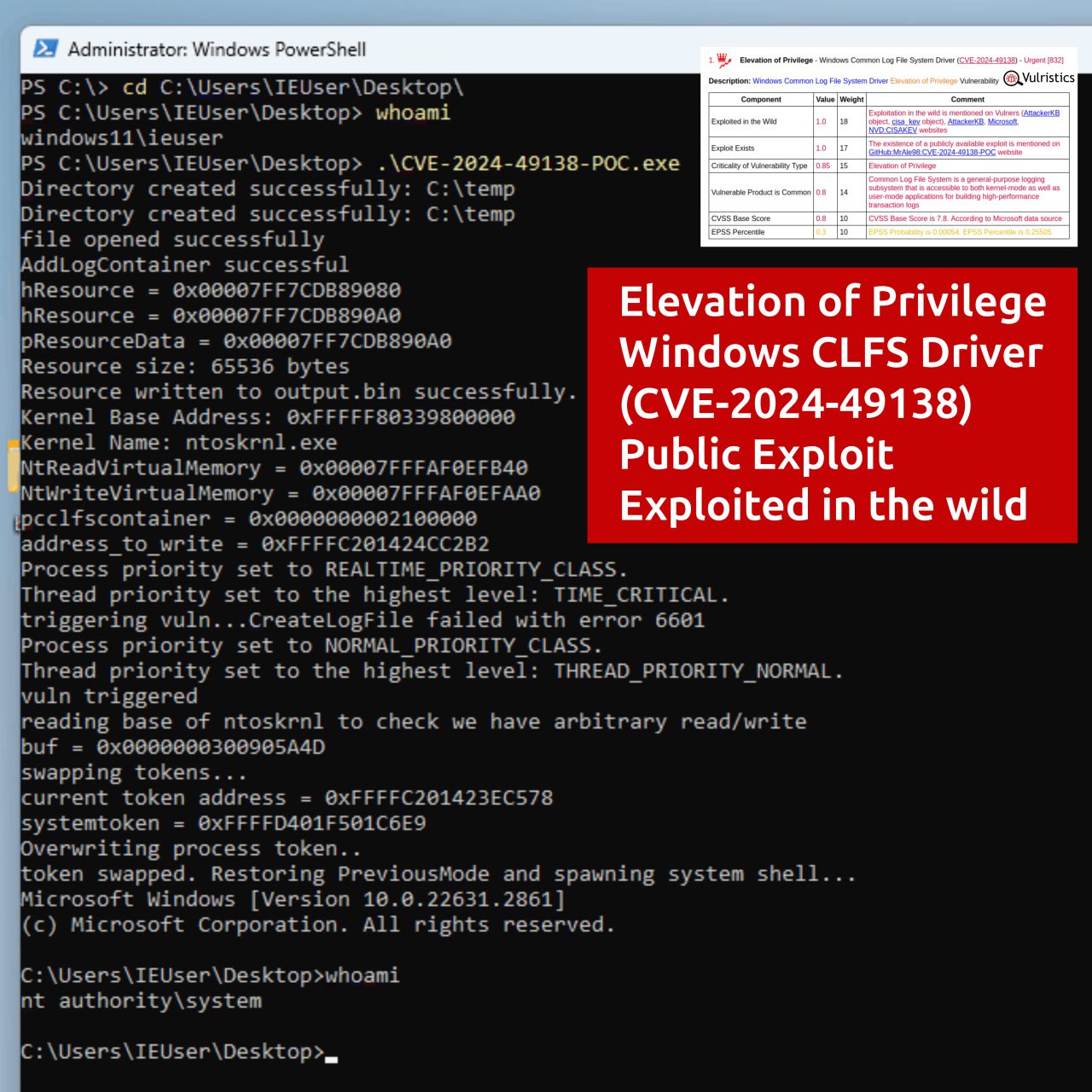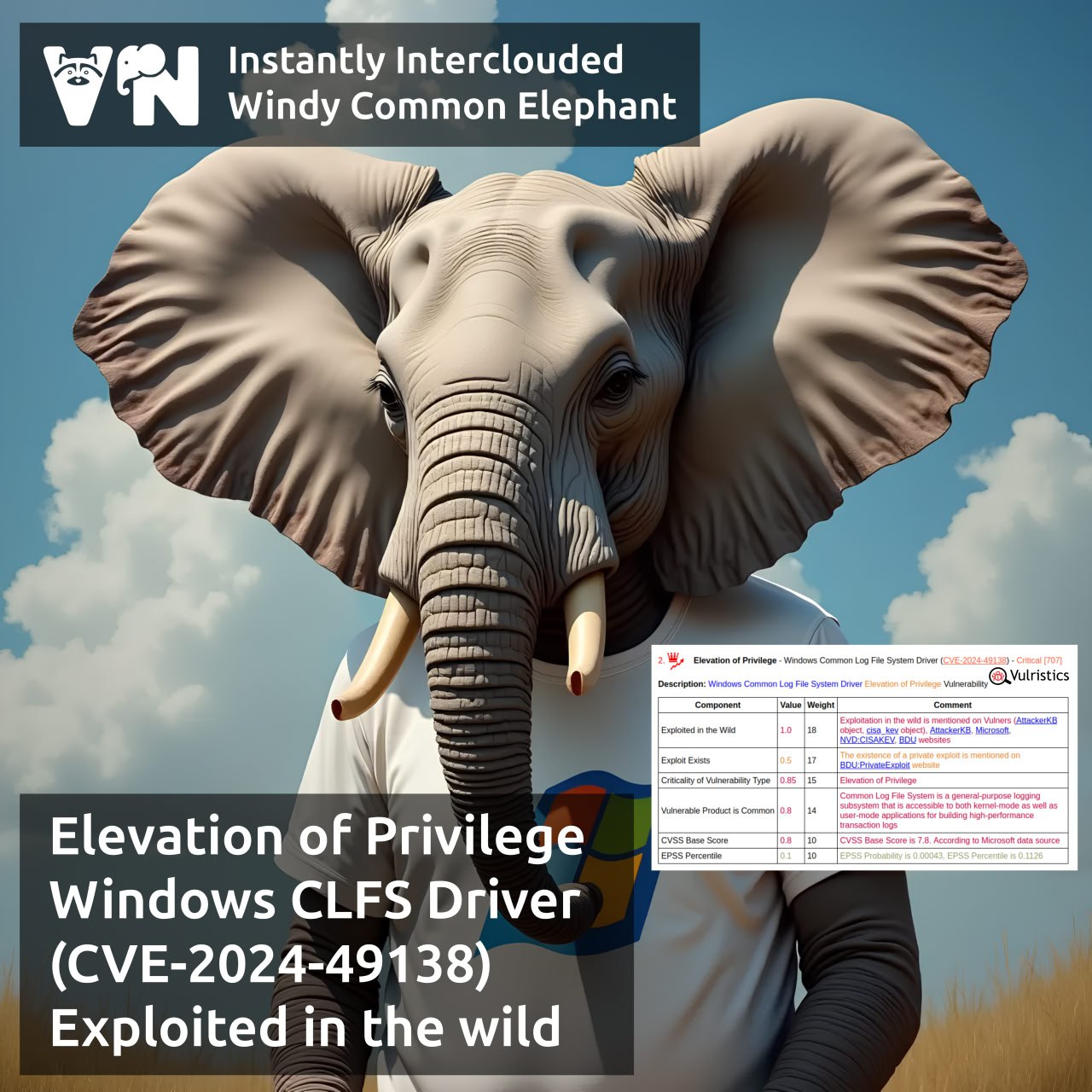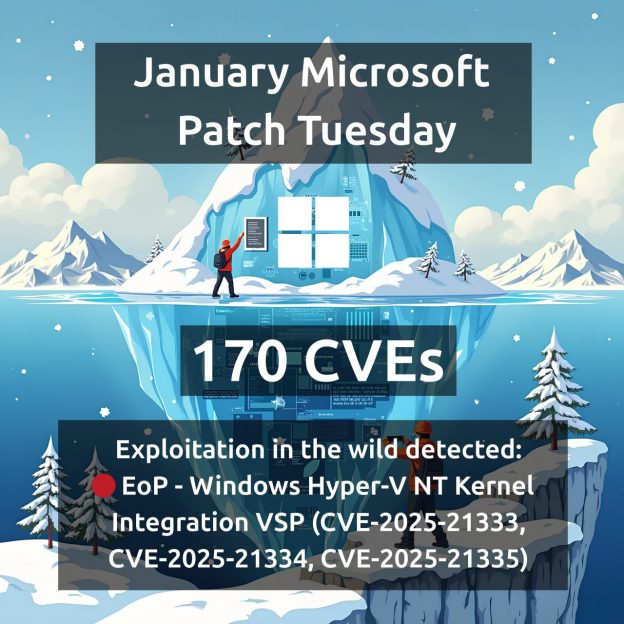
The Elevation of Privilege – Windows Common Log File System Driver (CVE-2024-49138) has become more critical. Just as I wrote that nothing had been heard about this vulnerability for a month since it was first published in Microsoft’s December Patch Tuesday, a public exploit for it appeared on January 15th. 🙂 It was developed by Alessandro Iandoli from HN Security. The source code and video demonstrating the exploit are available on GitHub: a local attacker runs an exe file in PowerShell and, after a second, becomes “nt authority/system”. The researcher tested the exploit on Windows 11 23h2. He also promises to publish a blog post with a detailed analysis of the vulnerability.













